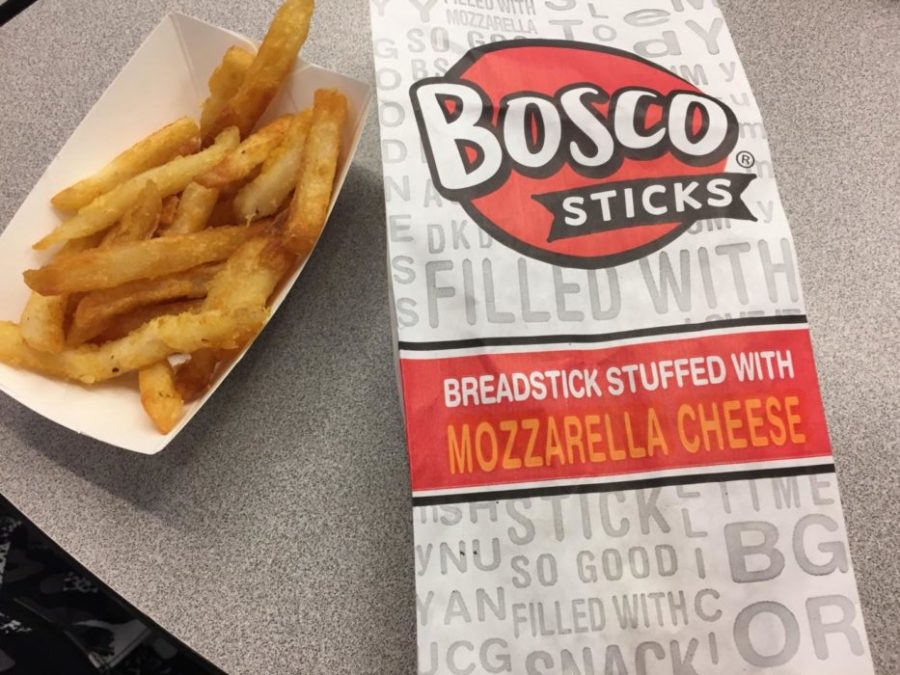The secrets to improving the school cafeteria food
A classic lunch meal at DGS — unfueling Bosco Sticks and a small side of greasy fries.
DGS attempts to show students that the lunch provided here at school is “healthy.” However, the “reduced fat” options do not exactly mean they are healthier options. Many students consume school lunches daily, but the food could be higher quality and more nutritious.
Students quickly discard the unsightly and unappetizing fruits and vegetables that are paired with their lunch.
Sometimes, a small portion of cucumbers is thrown in with the pizza meal, adding a “healthy” side, which does not compensate for the greasy, high-fattening pizza. Though it is meant to benefit students, most people do not eat the vegetable or fruit, which is then carelessly tossed into the garbage. The fruits and vegetables are not fresh and are often soggy, demotivating students to stay on the health grind.
The lunch menu at DGS lacks food allergy alternatives.
Every day, the menu looks similar to the main greasy food attractions: pizza, hamburgers and chicken sandwiches. All three meals include dairy and gluten, creating limited options for students with allergies. The three meals continue promoting highly saturated, fattening foods as the daily lunch meal.
Many meals like the Bosco Sticks, include whole-grain bread or reduced-fat products. As with most “whole-grain” foods, they‘re mistaken as a high nutrient, healthy option.
Bosco Sticks consist of two unfilling bread and cheese sticks that leave students hungry for their next period. It is not possible to feel energized after eating Bosco Sticks; students need quality fuel that will get them through the afternoon.
It does not take much from the school to make simple changes to the lunch menu. If they can distribute more money into ice-cream, then it is possible to substitute greasy foods with nutritional options.
Lunch options must be diverse and include fueling nutrients that provide students the energy needed to power through their classes. Meals should be prepared in ways that will benefit students with allergies and promote a healthier lifestyle.
For example, grill the chicken, offer gluten-free pizza, maybe a kale salad or how about some quinoa? Choices, there have to be choices and a diverse, healthier menu. This would improve the nutritional value of students’ meals and provide options for individuals with dietary restrictions (like gluten and dairy).
Kale salads are not every student’s forte, but meal variety would issue more choices for students. More students would buy and eat a school lunch if DGS offered fresh fruits and vegetables, healthier meals with more nutrients or better meal variety.
Hopefully, next time you eat fruit from the cafeteria it’s fresh and crisp — because soggy grapes are no one’s thing.


